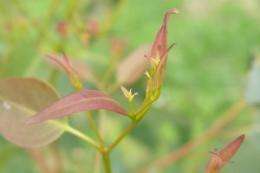More tuart dieback culprits found

A new Phytophthora fungi species might be a significant factor in tuart decline of tuart trees.
Murdoch University Tuart Health Research Group's Peter Scott at has found that Phytophthora multivora might be a large contributing factor in tuart decline. Other contributing factors include site clearing, insect pests, fire damage, site degradation, groundwater modification and climate change. The species’ name refers to its impact on several host species: tuart, jarrah and Banksia attenuata.
Mr. Scott’s study was funded through the Australian Research Council and used pathogenicity trials that test for the damage one organism or species can inflict upon another.
The trial he used incorporated Koch’s postulates. This is a list of four criteria that are tested to determine whether an organism is a pathogen to a particular species. The criteria dictate that the pathogen must be present in all diseased organisms but not healthy ones, that it must be isolated, that it must cause disease when introduced into a healthy organism and that it must be reisolated from the inoculated host. Mr. Scott stated that Phytophthora multivora was isolated, introduced into healthy tuart seedlings and then reisolated.
“Inoculated seedlings then showed similar disease symptoms as trees suffering tuart decline and Phytophthora multivora was reisolated” he said.
Stem injections of phosphite have improved crown health (a decline characteristic) but only at levels that partially inhibit pathogen growth.
Tuart decline is most severe in the Yalgorup National Park, moving northwards into the regional parks and reserves surrounding Rockingham. In some areas, tuart species are effectively extinct causing devastating impacts to the surrounding environment. Flora, fungi and fauna species are all affected and lead to increased erosion and ecosystem flammability.
Similar forest decline patterns have occurred globally where Phytophthora species have been present.
“Phytophthora species include some of the most devastating pathogens on earth affecting natural ecosystems and agriculture” Mr. Scott said.
Another species, Phytophthora cinnamomi, causes Phytophthora Dieback in WA and currently threatens 2300 out of 5700 plant species in the South West Botanical Province. Remote surveys in the South Coast region confirm that 465,000 out of 800,000 hectares have been infested with over 65% of the Stirling Range National Park affected.
Future research will define the distribution of the pathogen for better control and management, find out how exactly the pathogen affects tuart species and how all the contributing factors interact to cause tuart decline.
Provided by ScienceNetwork Western Australia













